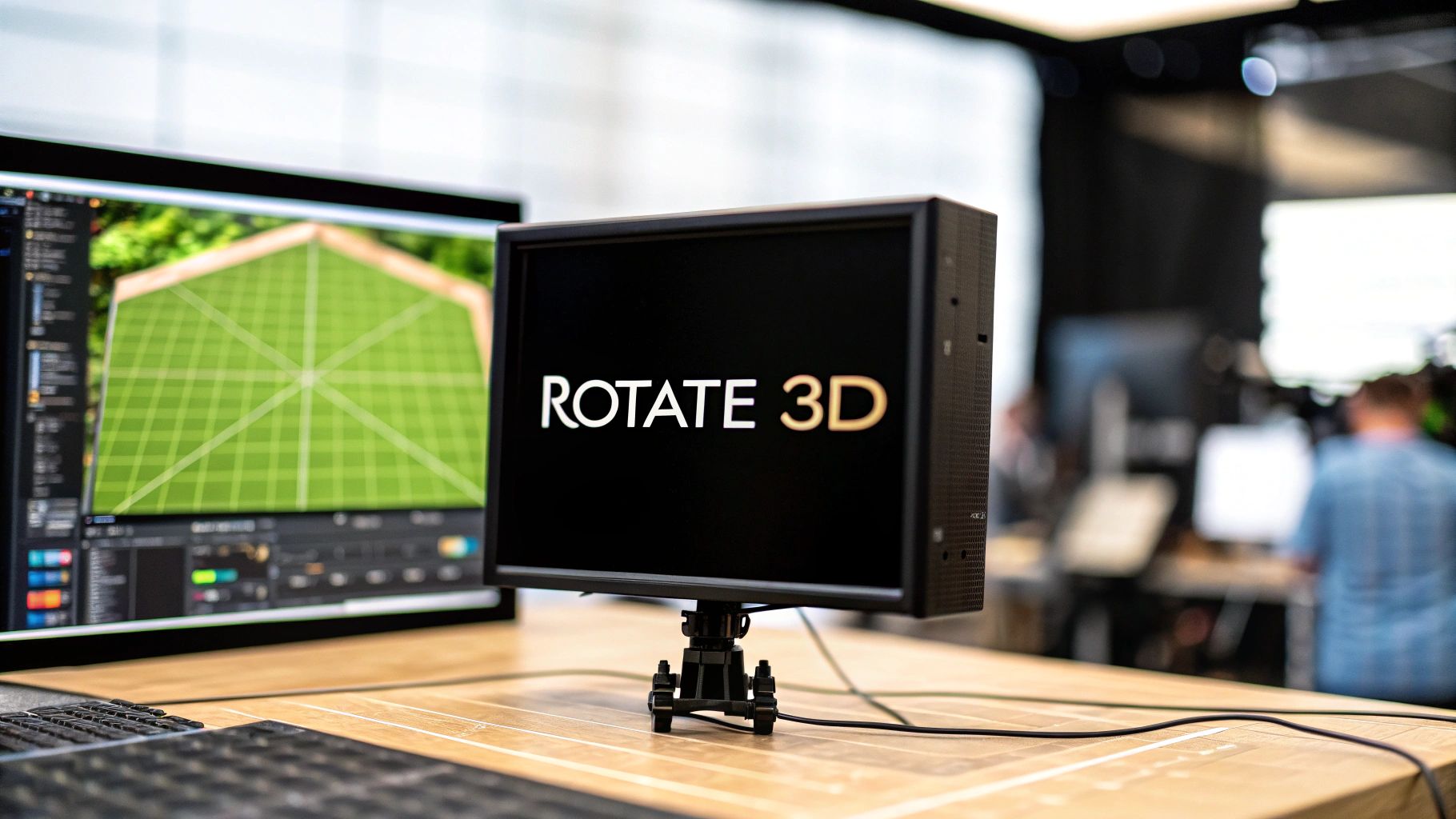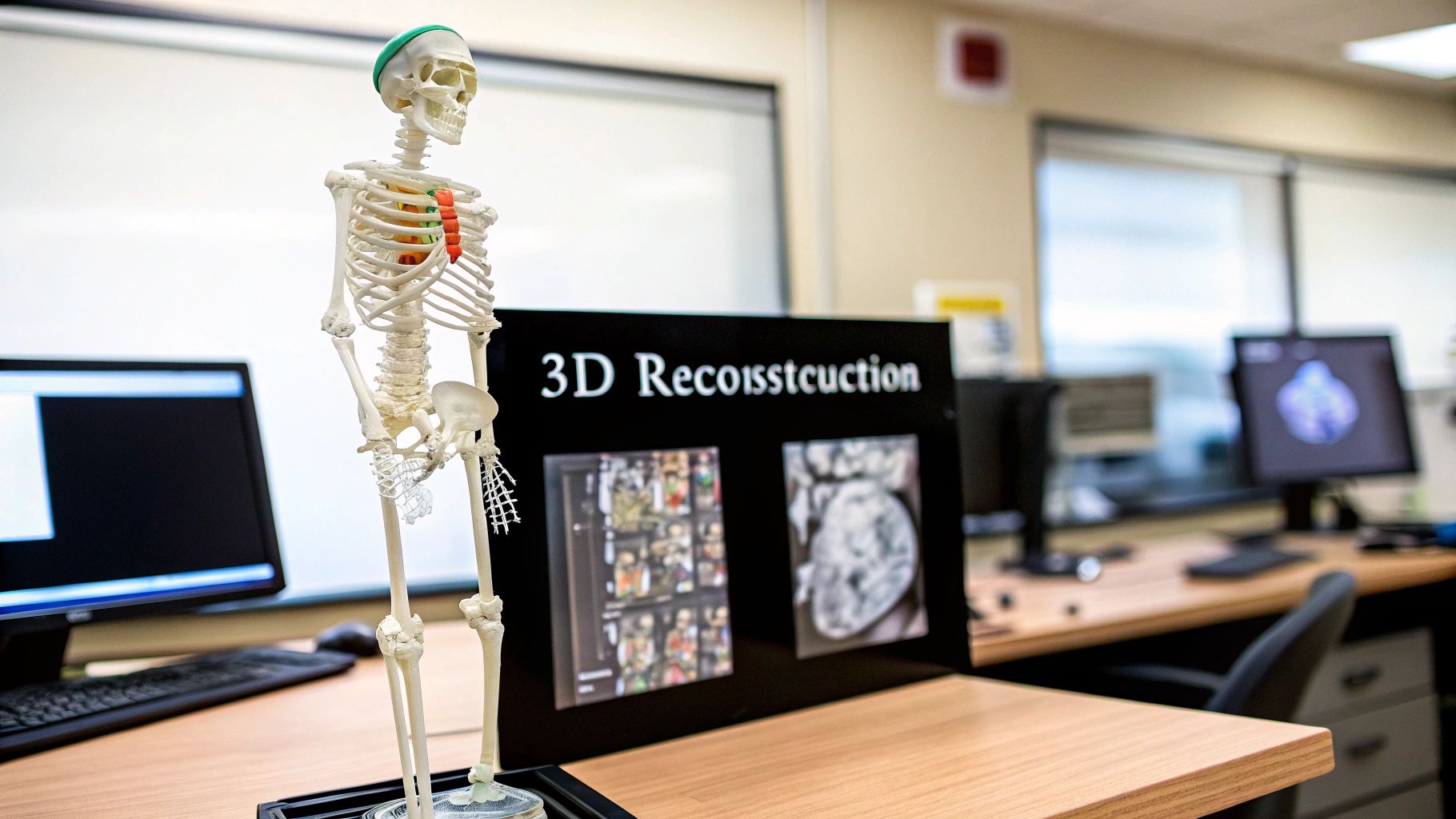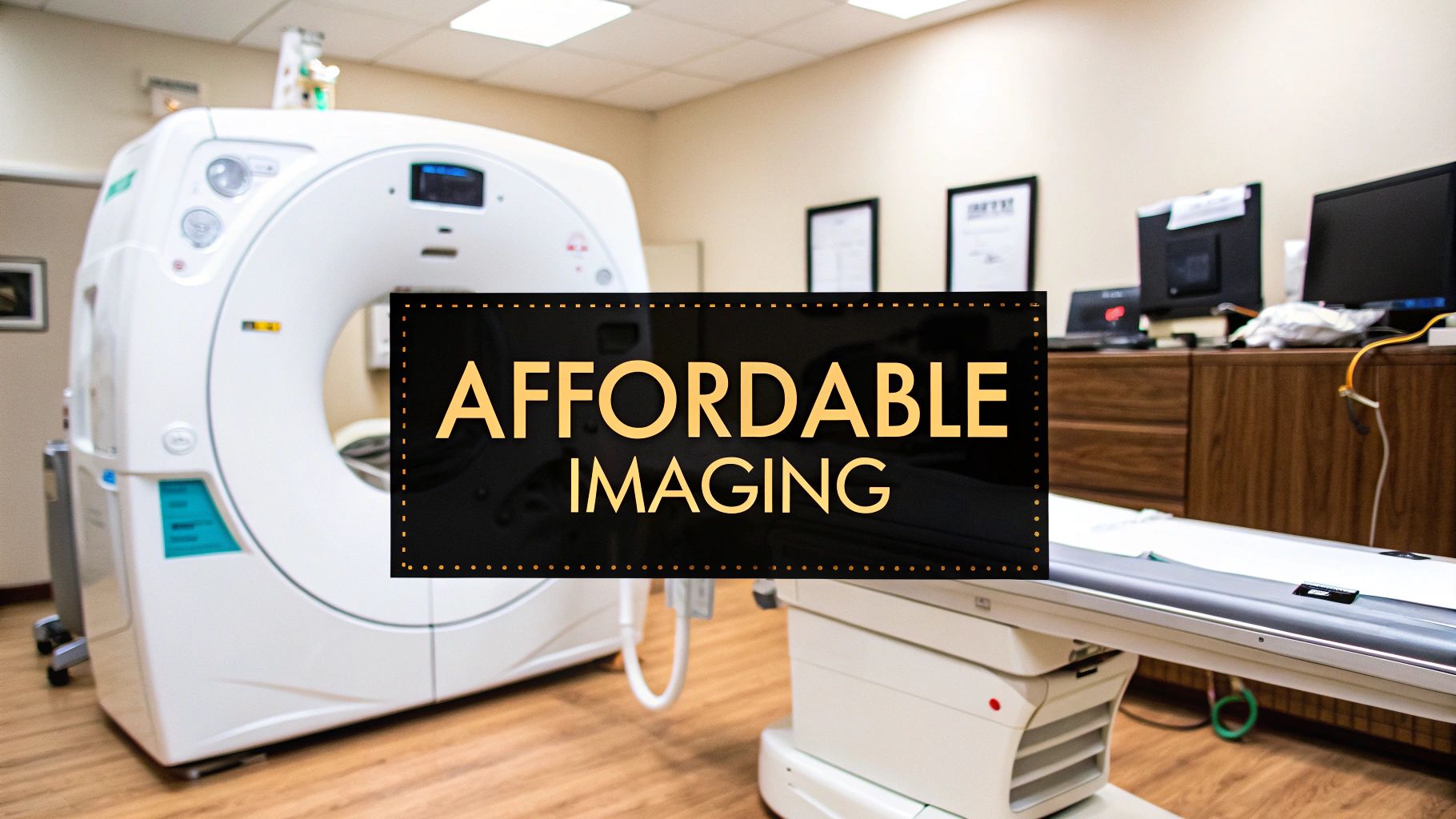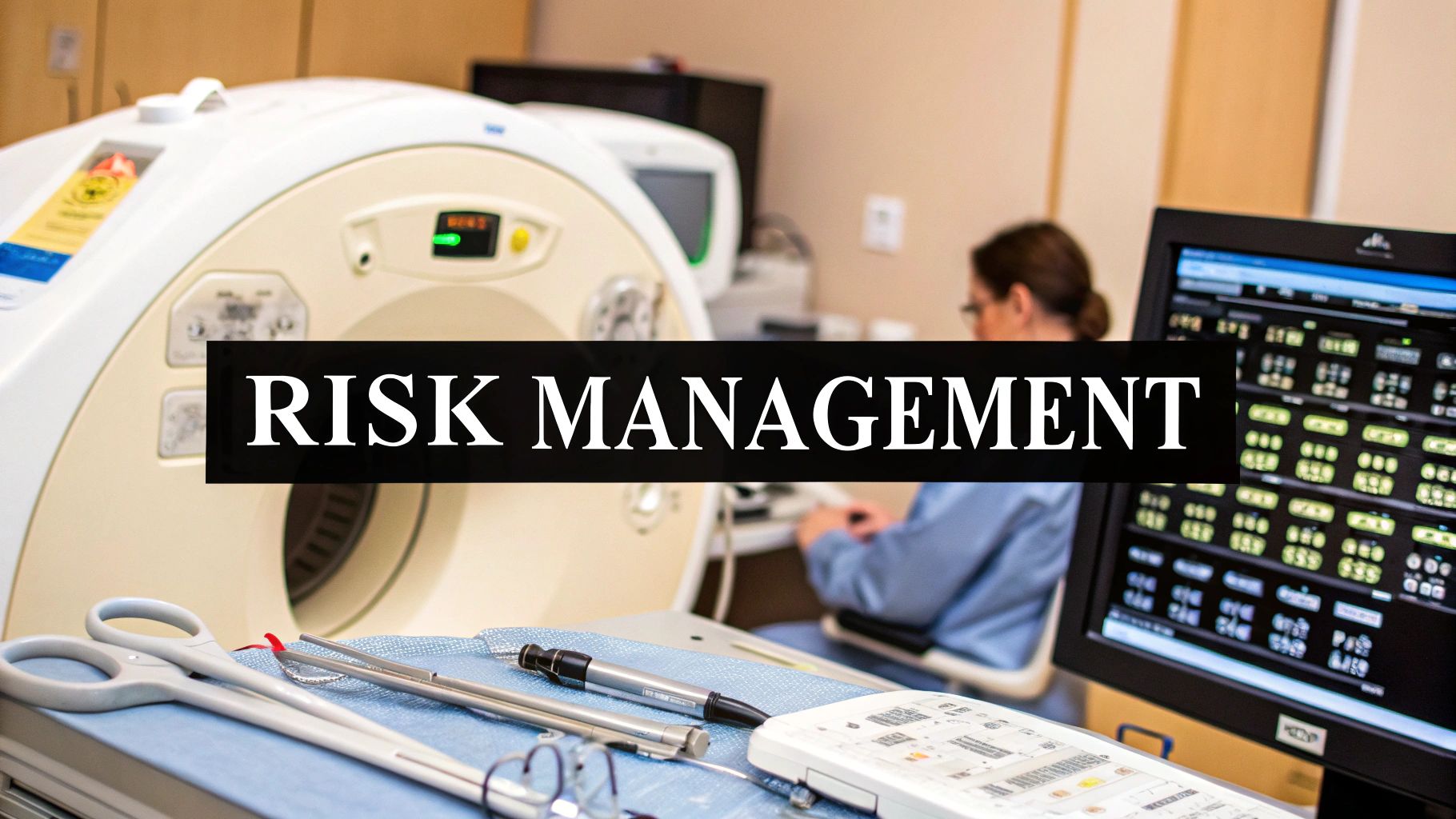The Fascinating World of 3D Image Rotation
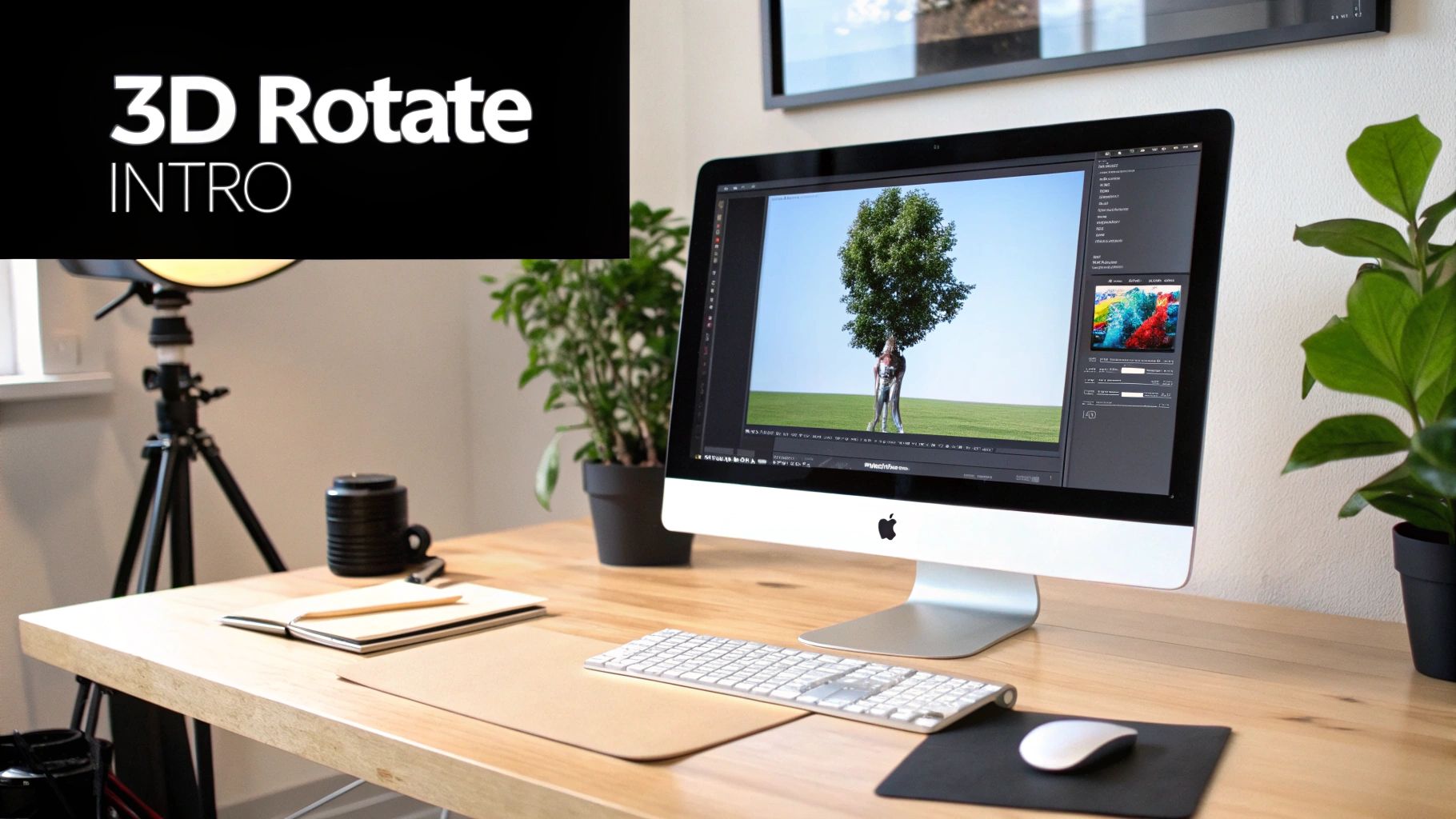
Rotating images in 3D provides a level of interactivity and depth that goes beyond traditional 2D visuals. This capability is increasingly important across diverse fields. Imagine examining a product online from all angles or a surgeon reviewing a 3D organ model before surgery. This is the potential of 3D image rotation. It allows users to manipulate and understand complex objects in new and engaging ways.
Understanding the Fundamentals of 3D Rotation
The foundation of 3D image rotation lies in coordinate systems. These systems define the position and orientation of objects in 3D space. Think of it as a three-dimensional grid, similar to a map, but with depth. The X, Y, and Z axes pinpoint the location of every point on the image. By manipulating these coordinates, we control the rotation.
Rotation Matrices and Quaternions: The Engines of 3D Movement
3D image rotation uses mathematical transformations known as rotation matrices and quaternions. Rotation matrices utilize grids of numbers to define how the image rotates around each axis. Quaternions, though mathematically more complex, offer a more efficient and robust method for handling rotations, especially with complex movements. They help avoid issues like “gimbal lock,” a problem that can restrict rotational freedom.
Overcoming Common Challenges in 3D Image Rotation
A common misconception is that using more images automatically results in smoother rotations. While increasing the number of images can improve smoothness to a degree, it also increases file size and loading times. Finding the right balance between smooth rotation and optimal performance is crucial. Additionally, distortion and pixelation can occur, especially with lower-resolution images. Professionals often mitigate these issues by optimizing image resolution and using techniques like interpolation, which fills in missing pixel data to maintain visual quality. The growing interest in this technology is evident in the 3D imaging market. As of 2024, the market was valued at USD 42.41 billion and is projected to reach USD 233.52 billion by 2034. This growth is fueled, in part, by the enhanced visuals 3D image rotation offers. You can explore more detailed statistics here: Precedence Research 3D Imaging Market. Addressing these challenges effectively is essential for creating truly immersive 3D experiences.
Powerful Tools to Rotate Image 3D Like a Pro
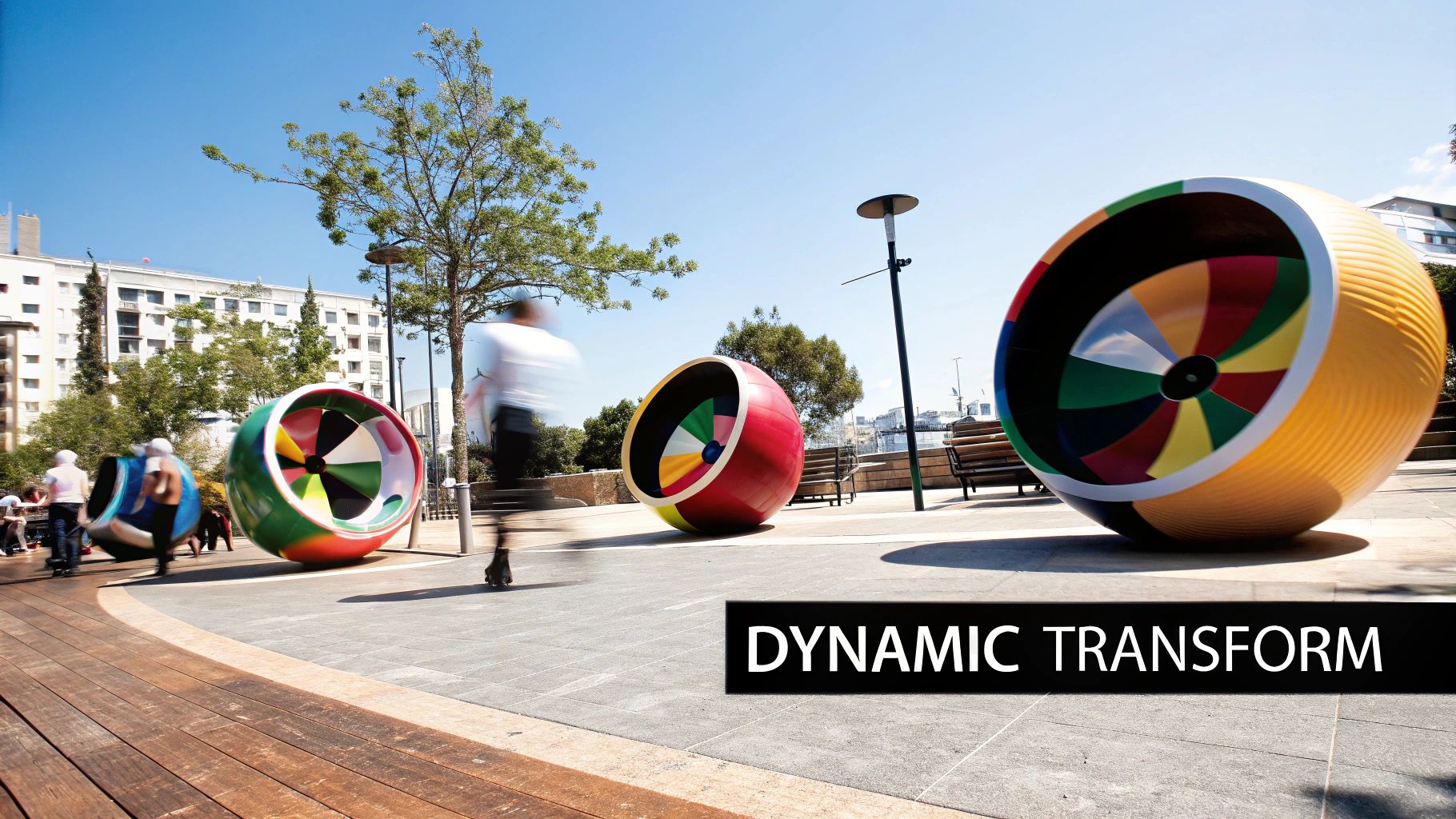
Choosing the right software for 3D image rotation is paramount for project success. It directly impacts efficiency and quality. This section explores the essential factors professionals consider when selecting tools for 3D rotation tasks. We'll cover both free and premium software options, providing insights from daily users.
Software Selection: Key Considerations
Several key factors influence software choices. The learning curve is crucial, especially for beginners. Some software offers powerful features but demands extensive training. Others prioritize intuitive interfaces for quicker project completion.
Project requirements also play a vital role. Simple rotations might need only basic software, while complex animations require advanced features. Finally, budget constraints are a practical concern. Free options are great starting points, but premium software often unlocks advanced features and dedicated support.
Exploring Free and Premium Options for Rotating Image 3D
Free software like Blender offers surprisingly robust 3D modeling, animation, and image rotation tools. It's an excellent choice for beginners or smaller projects. For professional projects or specialized features, premium options like Autodesk Maya and Cinema 4D are more suitable. These industry-standard tools come with advanced features, plugins, and robust support networks. Before making a decision, comparing key aspects of different software can be helpful.
To assist in this process, we've compiled a table showcasing leading 3D rotation software and their features:
Expert-Tested 3D Image Rotation Software:
Compare the essential capabilities of leading 3D rotation tools based on real-world professional usage and performance.
| Software | Price | Learning Curve | Key Features | Best For |
|---|---|---|---|---|
| Blender | Free | Steep | Comprehensive 3D modeling and animation suite | Beginners, hobbyists, smaller projects |
| Autodesk Maya | Subscription | Steep | Industry-standard for animation and visual effects | Professional film, television, and game development |
| Cinema 4D | Subscription | Moderate | User-friendly interface with powerful animation and motion graphics tools | Motion graphics, visualization, advertising |
This table highlights the varying strengths of each software package, helping you choose the right one based on your needs and budget. Blender is a powerful free option, while Maya and Cinema 4D offer professional-grade features at a premium price.
Maximizing Free Alternatives and Knowing When to Invest
Free software can be powerful for simple 3D image rotation and learning fundamentals. However, they might lack the advanced features, dedicated support, and integration capabilities of professional tools. While Blender offers robust functionalities, mastering it can take time. Investing in premium software is justified when consistent, high-quality output, advanced features, and efficient workflows become critical for your projects.
Workflow Optimization: Tips From the Pros
Professionals often combine free and premium tools, optimizing their workflows with keyboard shortcuts, scripting, and plugins. Batch processing automates repetitive tasks like rotating multiple images with consistent settings, significantly accelerating production. Regular software updates are also essential to leverage new features and performance enhancements. Continuous learning and adaptation are vital in the ever-evolving 3D image rotation field.
In the realm of 3D imaging, image rotation plays a key role in crafting immersive experiences. The Asia-Pacific region is expected to experience significant growth in 3D imaging technology investment, notably in Japan, India, and China. This is fueled by expanding sectors like healthcare, automation, and entertainment. For a deeper understanding of this trend, explore the 3D Imaging Market Growth analysis. This growth highlights the increasing importance of mastering 3D image rotation techniques and choosing the right software.
Mastering the Art of 3D Image Rotation
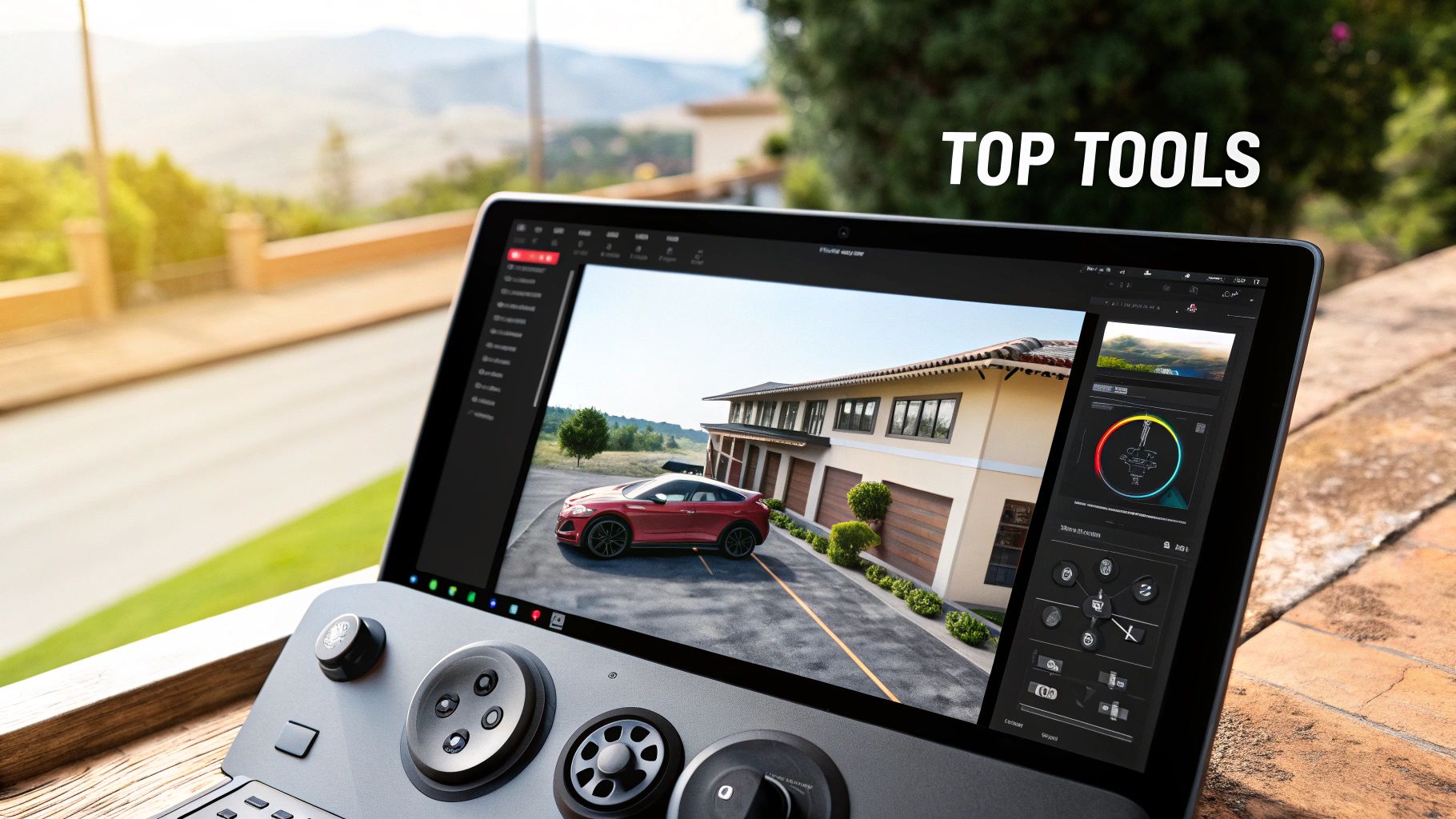
Creating a successful 3D image rotation involves a delicate balance of artistic vision and technical expertise. It's the process of transforming static images into engaging, interactive elements. This section provides practical guidance, covering every step from initial preparation to final refinements, emphasizing real-world techniques and efficient workflows used by professionals.
Preparing Your Images for 3D Rotation
Before beginning the rotation process, proper image preparation is essential. This involves ensuring your images are correctly sized and optimized for their intended purpose. High-resolution images are crucial for detailed rotations, but can result in large file sizes. Finding the right balance between resolution and file size is key. Optimizing image formats, like using JPG or the more efficient WEBP format, is also critical. This initial preparation will save you valuable time and effort later.
Understanding Rotation Settings and Their Impact
3D image rotation software offers a wide range of settings. Understanding which settings have the greatest impact on the final result is crucial for an efficient workflow. Rotation speed, axis control, and interpolation methods are some of the most important parameters to consider. For example, adjusting interpolation settings can significantly improve the smoothness of the rotation, especially when working with a limited number of images. Focusing on these key settings will streamline your process.
Maintaining Image Integrity During Complex Rotations
Rotating simple objects is straightforward, but maintaining image quality during complex 3D rotations requires advanced techniques. Professionals often use image stabilization and perspective correction to preserve visual integrity and compensate for distortions that can occur during complex movements. Keyframing provides precise control over the rotation path and timing, ensuring the rotated image moves naturally and conveys the intended message.
Keyboard Shortcuts: Speeding Up Your 3D Rotation Workflow
Mastering keyboard shortcuts can significantly accelerate your 3D image rotation workflow. Most software programs offer shortcuts for common tasks like rotating along specific axes, adjusting viewing angles, and applying transformations. Learning these shortcuts reduces time spent navigating menus, allowing for more time to be spent on creative exploration and refinement.
Troubleshooting Common 3D Rotation Problems
Challenges like distortion, pixelation, and awkward movement can arise during 3D image rotation. Understanding the root causes of these problems is the first step to resolving them. Pixelation often occurs when rotating lower-resolution images, and can be mitigated by increasing the image resolution or using interpolation techniques. Distortion can be caused by incorrect camera settings or perspective issues. Addressing these issues proactively prevents frustration. For in-depth troubleshooting information, consider consulting online forums and communities specializing in 3D graphics and animation.
One study suggests using between 20 and 80 images per 360-degree rotation offers a good balance between smooth movement and manageable file size. For high-end marketing presentations, using 72 or more images creates a more immersive experience. Adapting your approach based on project requirements and continually refining your skills will elevate your 3D rotations from basic to brilliant.
Advanced Techniques That Transform Your 3D Rotations
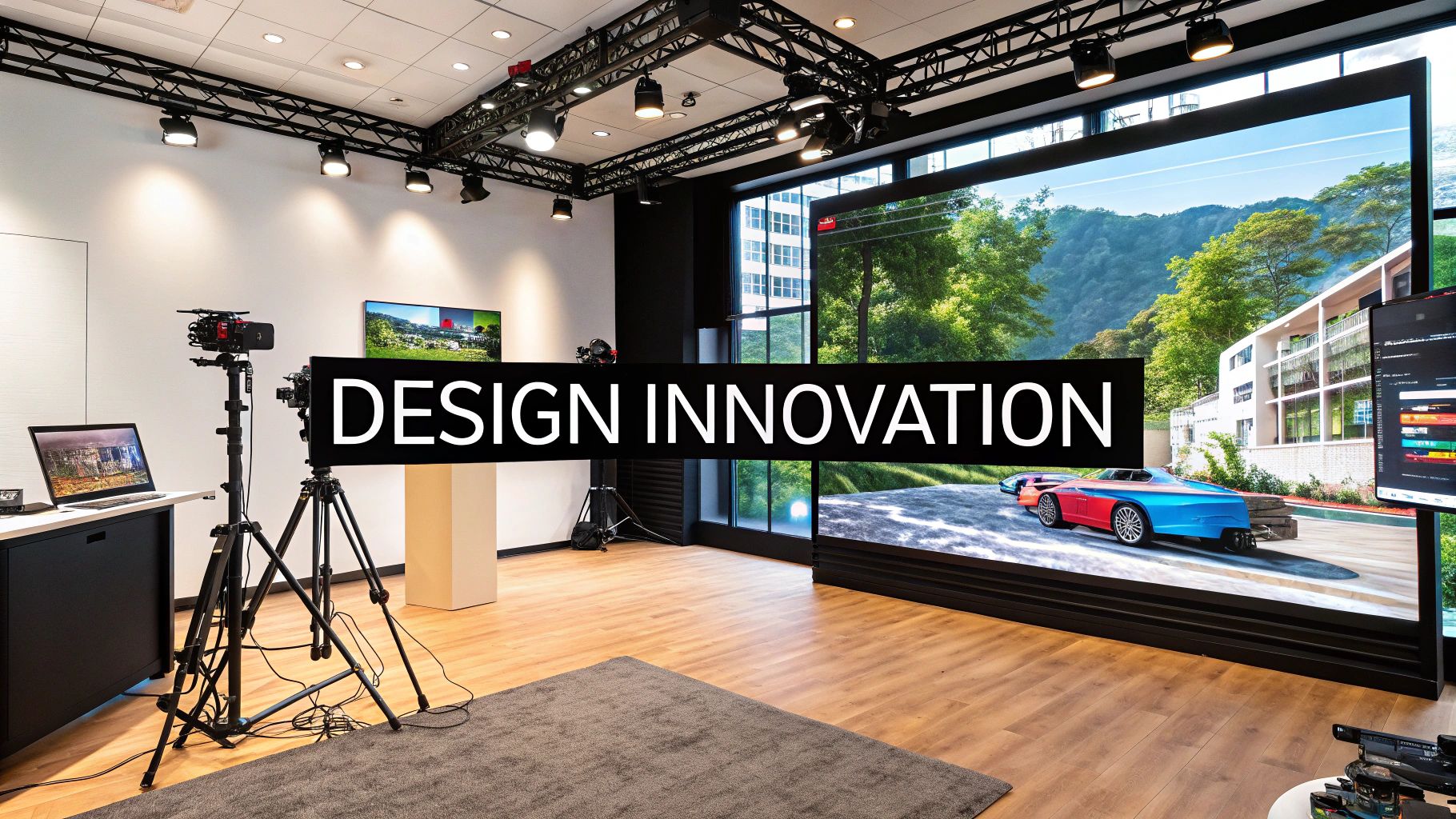
Building on the fundamentals of 3D image rotation, this section explores advanced methods to elevate your 3D work. These techniques distinguish professional results from amateur projects, injecting life and dynamism into your models.
Dynamic Rotation Paths: Creating Captivating Visual Journeys
While basic rotations have their place, dynamic rotation paths truly engage viewers. Imagine a product showcase where the camera smoothly orbits the object, highlighting key features from strategic angles. This approach adds a narrative element to your presentation. Skilled designers often utilize software like Blender with advanced keyframing features to achieve this fluid motion. This provides precise control over the camera's path, speed, and timing, resulting in a more captivating viewer experience.
Physics-Based Movement: Adding Realism to Your 3D Rotations
Incorporating physics-based movement is another impactful technique. This involves imbuing your rotated objects with realistic weight and momentum. Picture a 3D model of a medical device gently rotating, subtly reacting to simulated gravity or air resistance. This method enhances realism, making the rotation feel less artificial and more natural. For instance, instead of an abrupt stop, the rotation could gradually decelerate, mirroring real-world physics. This attention to detail heightens the viewer's sense of realism.
Automation for Complex Rotations: Precision Without Coding
Many intricate rotation sequences can be efficiently created through automation, without requiring extensive coding knowledge. Most 3D software packages offer tools for automating routine tasks. You can, for example, automate the process of rotating a 3D image around multiple axes in a precise sequence. Furthermore, scripting capabilities enable you to create custom automation workflows, optimizing repetitive tasks. This allows you to dedicate more time to the creative process and refining the details that truly bring your 3D models to life. The need for these technologies is rapidly increasing. The global 3D rendering market, intrinsically linked to 3D image rotation, is projected to grow at a CAGR of 25% from 2024 to 2032, reaching a value of USD 4.4 billion in 2023. More detailed statistics can be found here: 3D Rendering Market Statistics. This growth highlights the rising demand for advanced 3D rotation capabilities.
Practical Applications and Implementation
Effective application of these advanced techniques requires understanding the specific requirements of each project. Dynamic rotation paths are well-suited for product demonstrations and showcasing complex designs. Physics-based movement enhances realism in simulations and animations. Automation is crucial for managing complex rotations involving multiple objects or intricate sequences. By selecting the appropriate technique and understanding its implementation, you can substantially improve the quality and impact of your 3D image rotations.
How Industries Are Revolutionizing With 3D Rotation
From showcasing intricate product details to visualizing complex medical scans, the ability to rotate 3D images is changing how various industries operate. This interactive capability adds a level of depth that significantly enhances understanding and engagement. Let's explore how different sectors are utilizing this technology.
E-Commerce: Boosting Conversions With Interactive Product Displays
In the competitive e-commerce landscape, a detailed and engaging product experience is essential. 3D image rotation lets online shoppers examine products from all angles, much like in a physical store. This interactivity boosts customer confidence, leading to increased conversion rates and fewer returns. For example, furniture retailers use 3D rotation to showcase pieces, allowing customers to visualize how they would fit in their homes.
This immersive experience gives customers a realistic sense of scale, texture, and overall appearance, making them more likely to purchase.
Healthcare: Improving Diagnostic Accuracy and Treatment Planning
3D image rotation has become an important tool in healthcare. Rotating 3D models of organs or bone structures gives medical professionals a comprehensive understanding of a patient's anatomy. This enhanced visualization improves diagnostic accuracy and allows for more precise surgical planning. 3D rotated images also help explain complex procedures to patients, improving communication and informed consent. This clear visualization empowers patients to actively participate in their healthcare decisions.
Architecture and Design: Winning More Projects With Immersive Presentations
Architectural firms use 3D image rotation to create compelling presentations. Clients can virtually explore building interiors and exteriors, getting a clearer understanding of the proposed project. This immersive experience is valuable for winning bids and securing client approvals. Furthermore, 3D rotation facilitates better collaboration among design teams, leading to more efficient communication and faster design iterations. This streamlined workflow can save time and resources, ultimately benefiting both the firm and the client.
Challenges and Solutions in Industry Adoption
Integrating 3D image rotation does have some challenges. File sizes of 3D models can impact website loading speeds, especially for e-commerce platforms. However, optimization techniques and efficient image formats like WEBP help minimize this. Another challenge is ensuring smooth and realistic rotation, which requires technical expertise and appropriate software like Blender.
The growing demand for interactive 3D visuals is reflected in related markets. The 3D animation market, which relies heavily on rotating images, was valued at USD 21,462.93 million in 2022 and is projected to reach USD 55,349.72 million by 2031. Learn more: 3D Animation Market. This growth underscores the increasing importance of 3D rotation technology.
To help illustrate real-world applications, let's look at some specific examples. The following table showcases how different industries are using 3D rotation.
3D Rotation Success Stories Across Industries
| Industry | Primary Application | Key Benefits | Implementation Challenges |
|---|---|---|---|
| E-commerce | Interactive product displays | Increased conversions, reduced returns | Optimizing image size for web performance |
| Healthcare | Diagnostic imaging, surgical planning | Improved accuracy, better patient communication | Ensuring data security and privacy |
| Architecture | Client presentations, design collaboration | Enhanced visualization, improved project understanding | Managing complex 3D models and software integration |
As the table shows, the benefits of 3D rotation are significant, and businesses are finding innovative ways to overcome implementation challenges.
Actionable Insights and Real-World Applications
Successfully implementing 3D image rotation requires careful planning and attention to detail. Prioritizing user experience and optimizing image quality are key to realizing the technology's full potential. By understanding the specific needs and challenges of each sector, businesses can effectively use 3D image rotation to drive innovation and achieve results. The future of 3D rotation looks bright, with emerging technologies and advanced software promising even more immersive experiences.
The Next Frontier in Rotating Image 3D Technology
The world of 3D image rotation is constantly changing, thanks to advancements in artificial intelligence, mixed reality, and hardware. These technologies aren't just minor upgrades; they represent a whole new way we interact with and use 3D images. Let's explore these advancements, focusing on practical applications and their impact on your future work.
The Rise of AI in 3D Image Rotation
Artificial intelligence is already improving 3D image rotation in several important ways. For example, AI-powered upscaling algorithms boost the resolution of existing 3D images, leading to smoother rotations and finer details. AI also automates complex rotation tasks, such as creating dynamic rotation paths and applying physics-based movement. This automation lets designers and artists concentrate on the creative side of their projects. Additionally, AI enables new interactions with 3D images, like using voice commands to control rotations or creating 3D models from simple sketches.
AI also plays a significant role in related fields like computer vision, which enables computers to “see” and interpret images, much like the human eye. This allows for more sophisticated and automated 3D image manipulation.
Mixed Reality: A New Dimension for Experiencing Rotated 3D Content
Mixed reality (MR) environments blend the physical and digital worlds, creating completely new ways to experience rotated 3D content. Imagine rotating and interacting with a virtual 3D product model as if you were holding it. MR technologies like augmented reality (AR) and virtual reality (VR) are making this a reality. AR applications can overlay rotated 3D images onto the real world, letting users interact with virtual objects in their physical space. VR headsets, conversely, fully immerse users in virtual environments where they can freely rotate and manipulate 3D models.
Hardware Innovations: Overcoming Current Limitations
Current limitations in 3D image rotation, such as processing power and display resolution, are being addressed by ongoing hardware innovations. Stronger GPUs and CPUs allow for smoother real-time rotations of complex 3D models, while higher-resolution displays create a more immersive and visually rich experience. Specialized hardware like haptic gloves and 3D scanners also contribute to more natural and intuitive 3D image interaction. Haptic gloves give tactile feedback when interacting with virtual 3D models, and 3D scanners capture real-world objects, turning them into rotatable 3D models. The increasing accessibility and affordability of 3D printing lets users physically create objects from rotated 3D models, connecting the virtual and physical worlds.
3D reconstruction also plays a key role in creating and manipulating 3D models. The global 3D reconstruction technology market was valued at USD 1.35 billion in 2023 and is projected to reach USD 4.04 billion by 2033. More detailed statistics can be found here: 3D Reconstruction Technology Market.
Preparing for the Future of 3D Image Rotation
Advancements in AI, mixed reality, and hardware are set to transform 3D image rotation. To stay ahead, consider these key steps:
-
Stay Updated: Regularly explore industry publications, attend conferences, and follow thought leaders.
-
Experiment: Hands-on experience with new software and hardware offers valuable insight into their potential and limitations.
-
Develop New Skills: Adaptability is crucial. Focus on building skills that embrace these emerging technologies and complement your current expertise.
By proactively preparing, you can harness the power of 3D image rotation technology and take your work to new heights.
PYCAD, a company specializing in integrating artificial intelligence into medical imaging, provides advanced solutions for rotating and manipulating 3D medical images. With expertise in data handling, model training, and deployment, PYCAD helps medical device manufacturers and healthcare technology companies improve diagnostic accuracy and operational efficiency. Learn how PYCAD can enhance your medical imaging workflow at their website.
